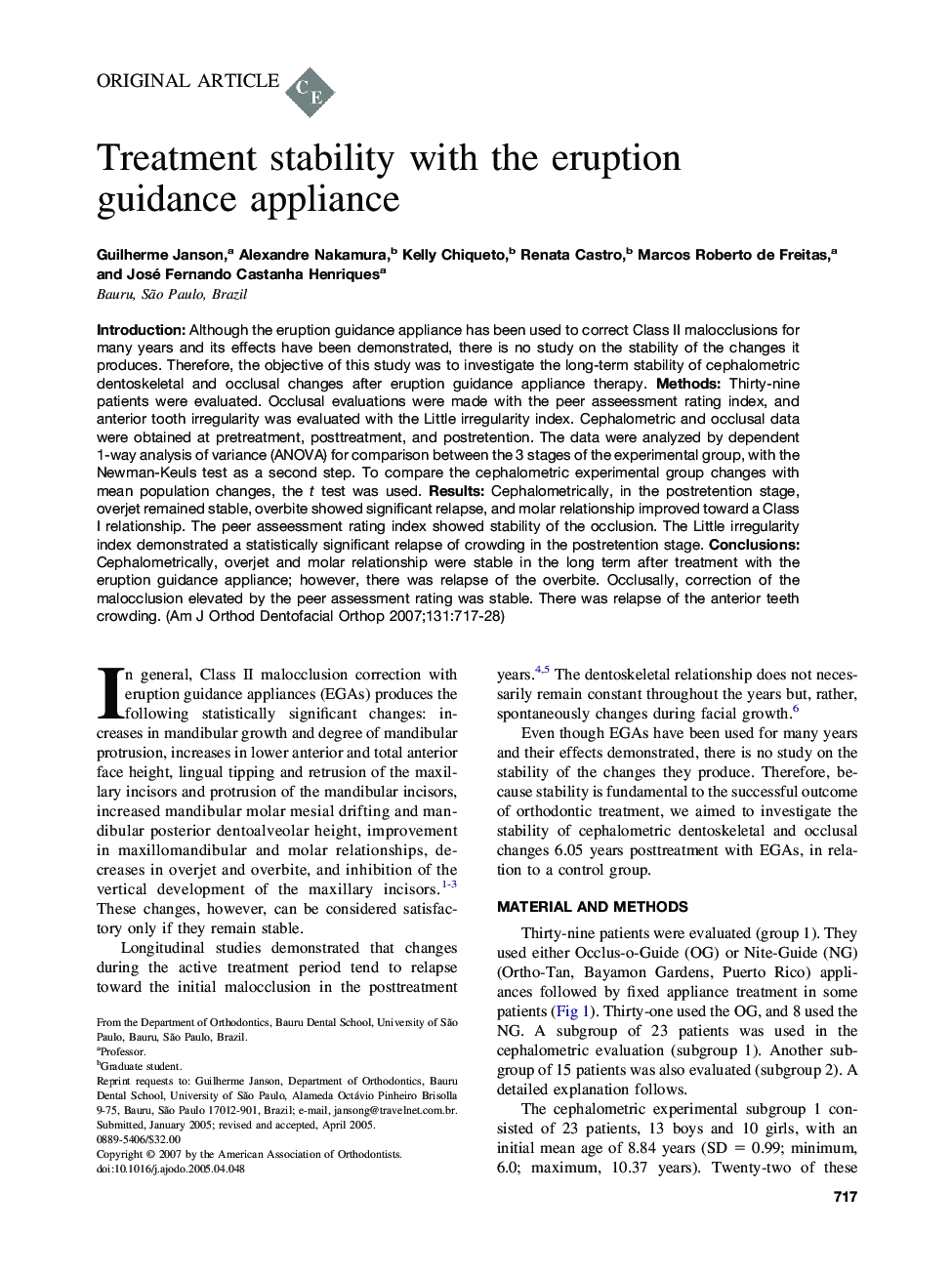| Article ID | Journal | Published Year | Pages | File Type |
|---|---|---|---|---|
| 3120408 | American Journal of Orthodontics and Dentofacial Orthopedics | 2007 | 12 Pages |
Introduction: Although the eruption guidance appliance has been used to correct Class II malocclusions for many years and its effects have been demonstrated, there is no study on the stability of the changes it produces. Therefore, the objective of this study was to investigate the long-term stability of cephalometric dentoskeletal and occlusal changes after eruption guidance appliance therapy. Methods: Thirty-nine patients were evaluated. Occlusal evaluations were made with the peer asseessment rating index, and anterior tooth irregularity was evaluated with the Little irregularity index. Cephalometric and occlusal data were obtained at pretreatment, posttreatment, and postretention. The data were analyzed by dependent 1-way analysis of variance (ANOVA) for comparison between the 3 stages of the experimental group, with the Newman-Keuls test as a second step. To compare the cephalometric experimental group changes with mean population changes, the t test was used. Results: Cephalometrically, in the postretention stage, overjet remained stable, overbite showed significant relapse, and molar relationship improved toward a Class I relationship. The peer asseessment rating index showed stability of the occlusion. The Little irregularity index demonstrated a statistically significant relapse of crowding in the postretention stage. Conclusions: Cephalometrically, overjet and molar relationship were stable in the long term after treatment with the eruption guidance appliance; however, there was relapse of the overbite. Occlusally, correction of the malocclusion elevated by the peer assessment rating was stable. There was relapse of the anterior teeth crowding.
